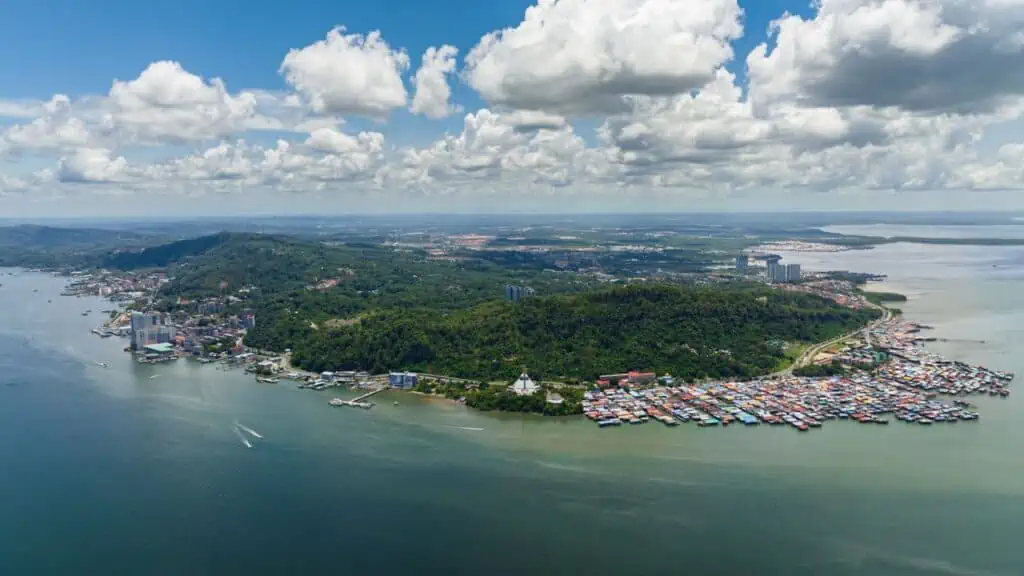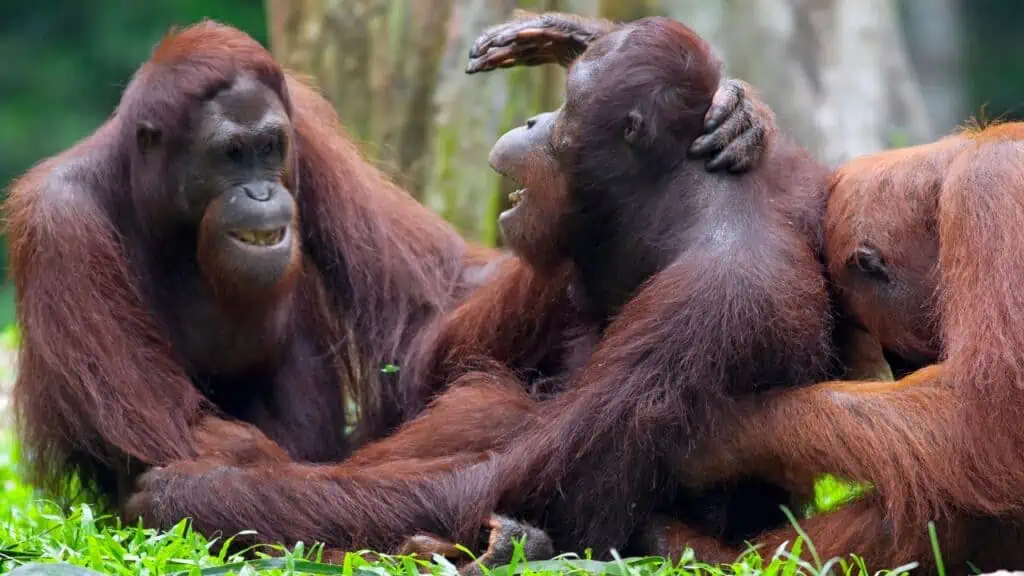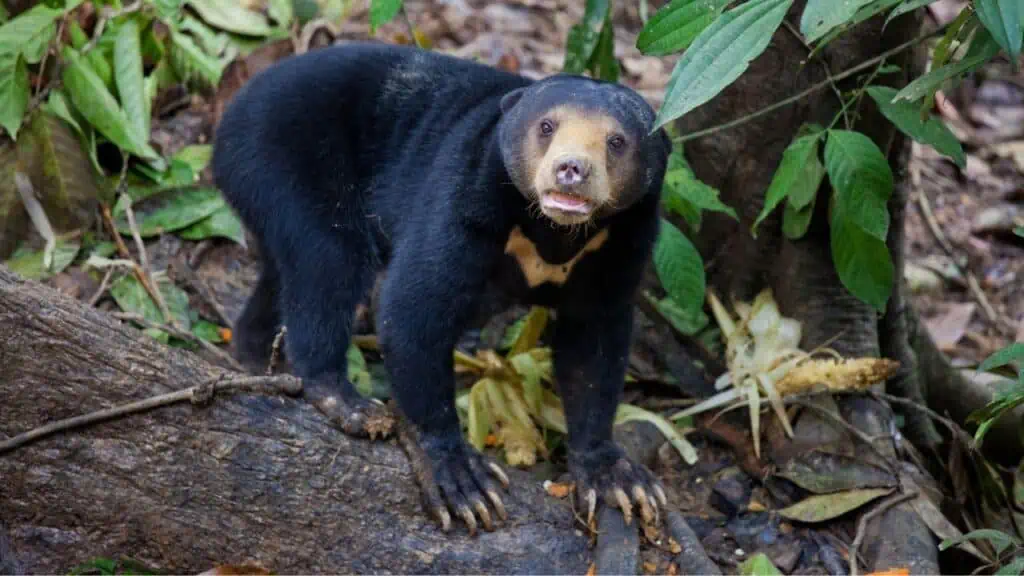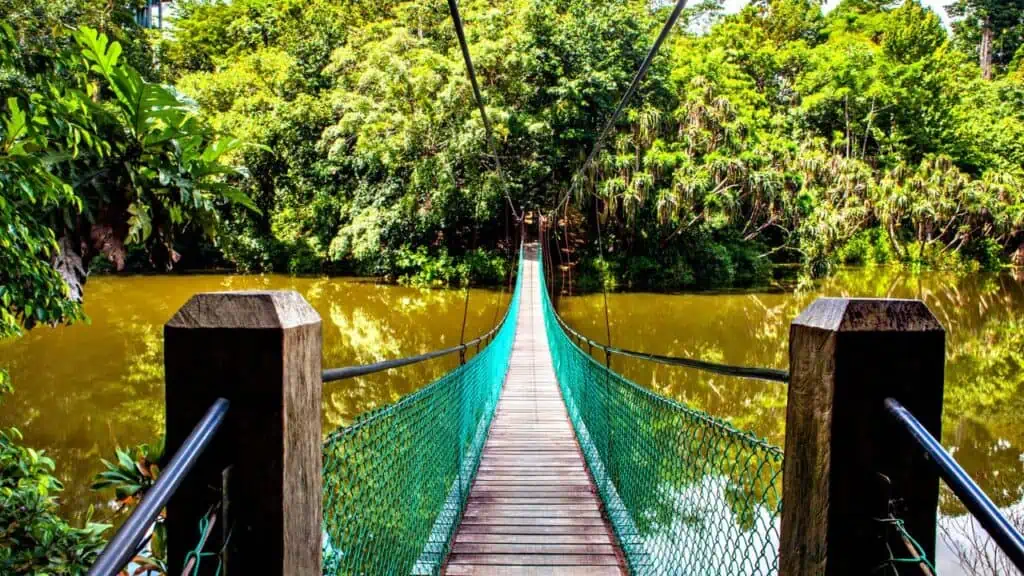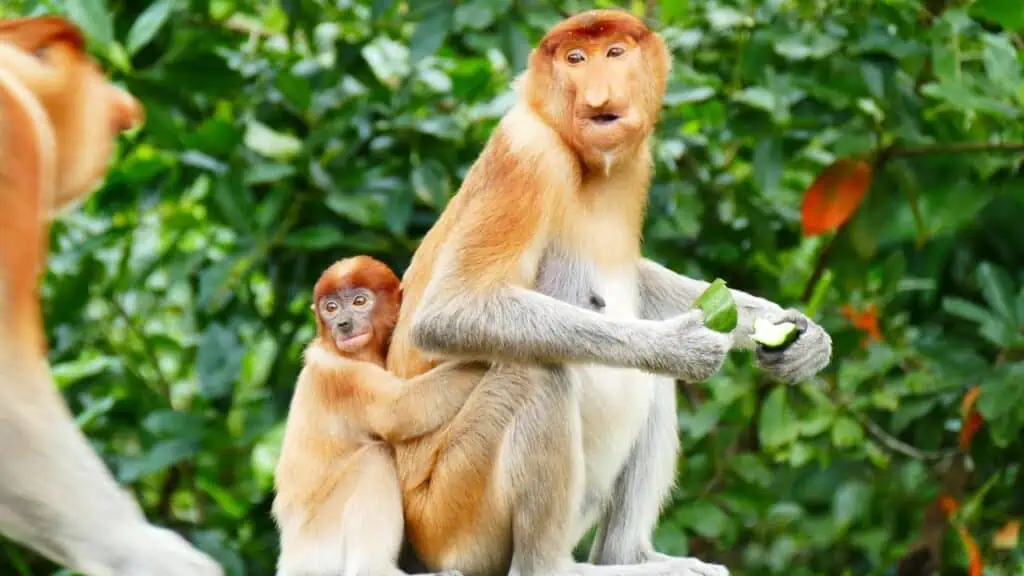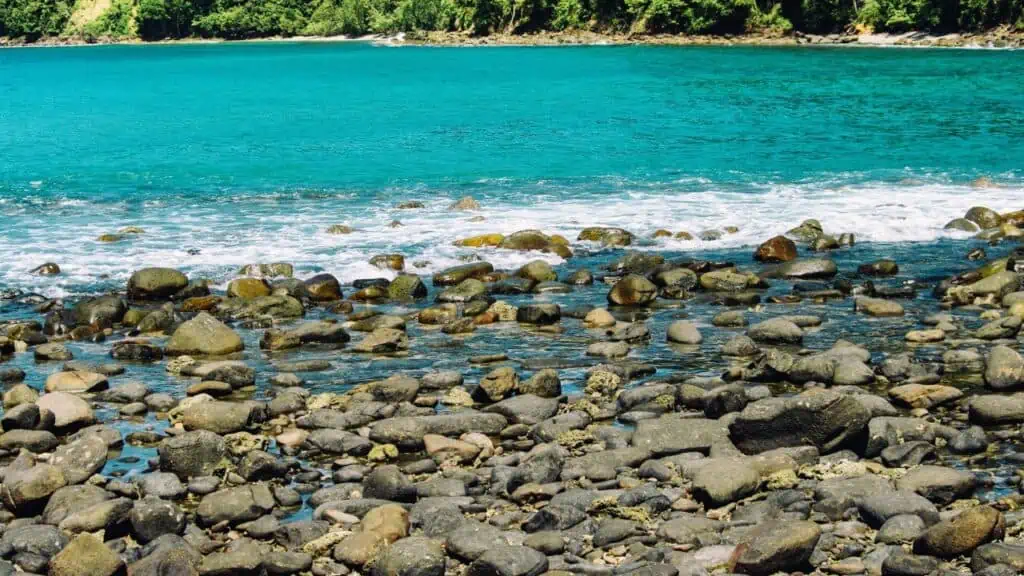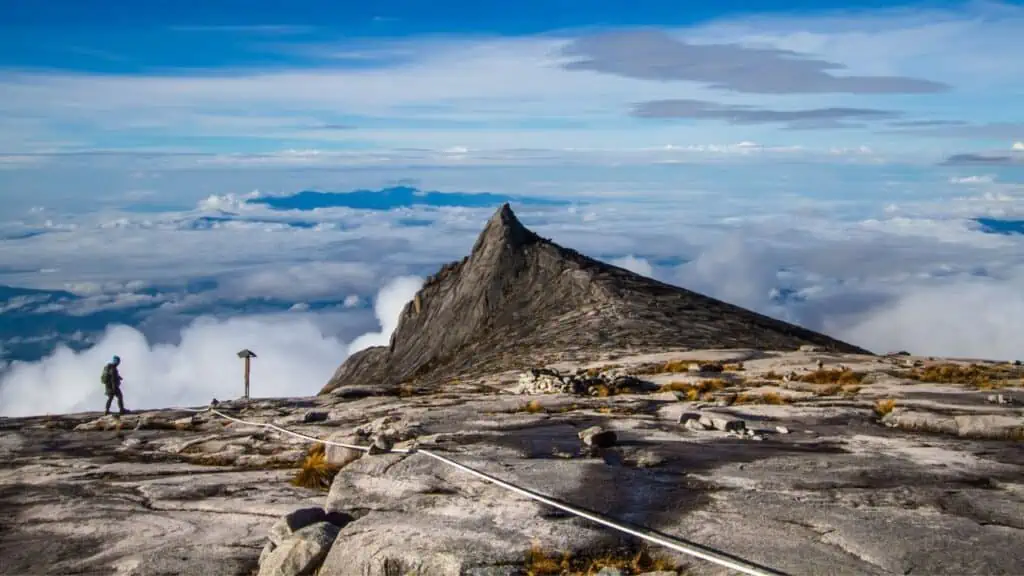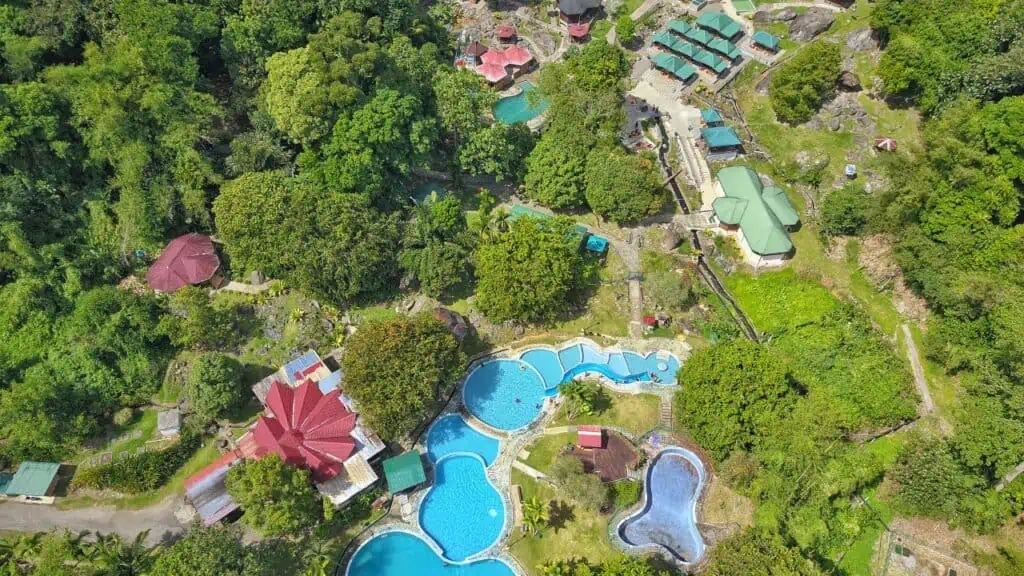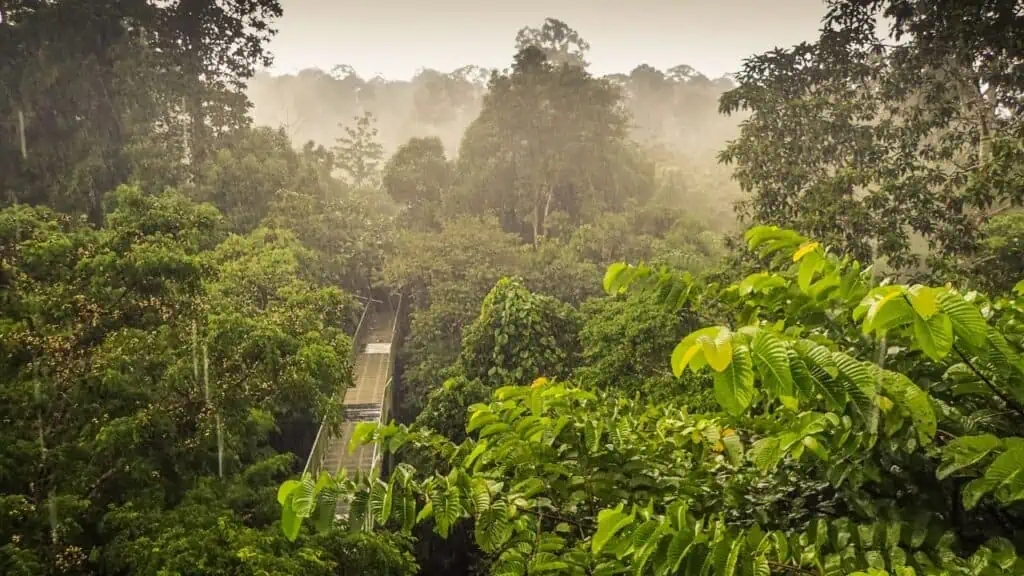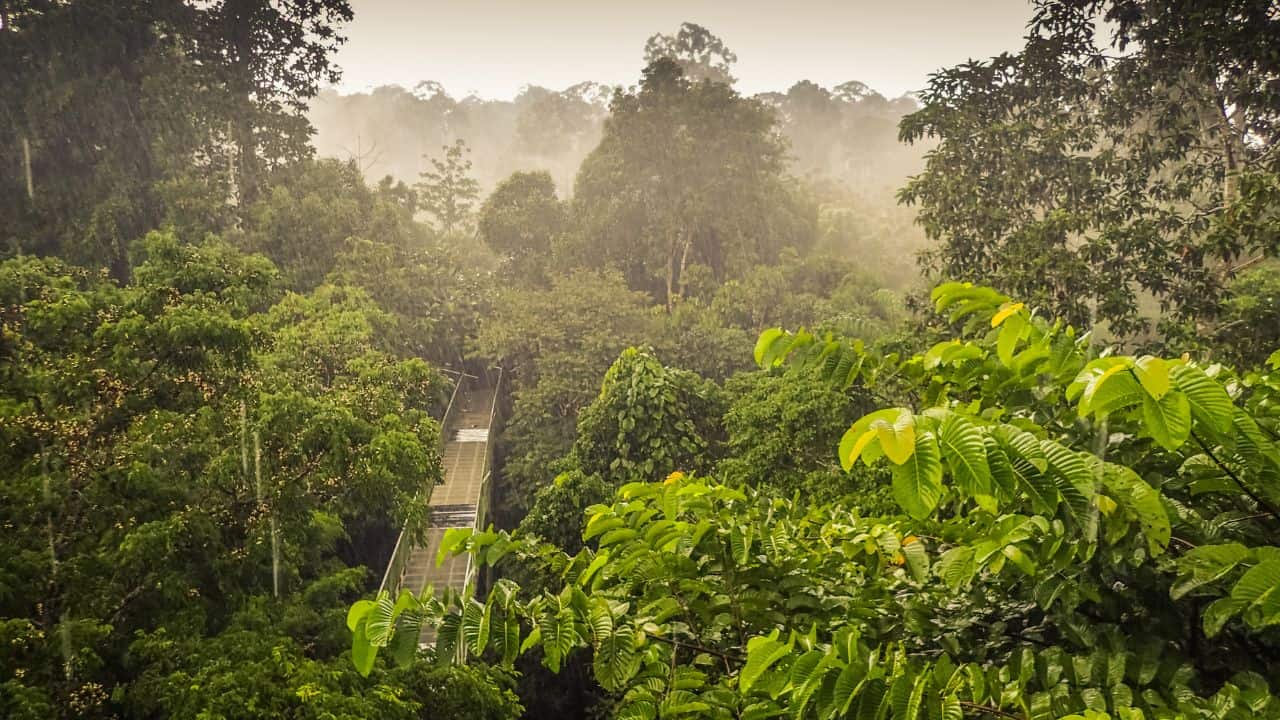
Borneo is a bucket list destination for many, synonymous with orangutans and rainforest lodges. It’s the third-largest island in the world and is divided into thirds belonging to Malaysia, Indonesia, and Brunei.
Borneo has one of the oldest rainforests in the world and is known for its biodiversity. But it hasn’t been without its issues. Palm oil plantations have taken over a significant portion of the forest, significantly affecting the animals there.
The good news is that the government and local charities take conservation and reforestation seriously, ensuring this island can continue offering unique tourist experiences.
March, April, and May are the best times to visit Borneo. These months have the least rainfall, and temperatures aren’t relatively as high as in summer. May and September may also be a bit cheaper and less competitive when it comes to securing accommodation. You’ll also be able to enjoy smaller crowds at popular tourist spots.
Malaysian Borneo is home to two popular vacation destinations: Sandakan and Kota Kinabalu, both in the Sabah region to the north of the island. During our family trip to the island, we visited the recommendations below.
Part One: Rainforest Adventures Near Sandakan
Our first base was near Sandakan, specifically the small town of Sepilok, where we were treated to many wildlife viewing opportunities and submerged in nature. The Sepilok Forest Edge Resort offers an incredible lodging experience in the Borneo rainforest, located in Sandakan and just a short 20-minute drive from the Sandakan airport.
Sepilok Orangutan Rehabilitation Centre
Sepilok Orangutan Rehabilitation Centre, formerly known as Pusat Pemuliharaan Orang Utan Sepilok, was set up in 1964 by Barbara Harrison, an English woman. This center cares for orphaned and injured orangutans and prepares them to return to the rainforest, if possible.
You can visit the center with a guide or on your own. Guides are often much better at spotting the orangutans in the trees. Their red hair camouflages them well against the branches, so they’re not always easy to see. Food is put out on raised platforms on two occasions during the day —make sure you check when the feeding times are, as you’re more likely to see orangutans then.
Borneo Sun Bear Conservation Sanctuary
You won’t have to go far to reach the Borneo Sun Bear Conservation Sanctuary – it’s just across the car park from the Orangutan Rehabilitation Centre.
Sun bears are the world’s smallest breed and the second most endangered. Their name comes from the golden crescent shape on their chest. Most bears here were previously kept as pets or by people who wanted to trade their body parts (particularly the gallbladder) for medicinal use. By visiting the center, you will support the center in caring for the bears and drawing attention to the practices that have harmed them.
Rainforest Discovery Centre
Also, in Sepilok, the Rainforest Discovery Centre is where you can learn more about the ecosystems and biodiversity in Borneo’s rainforests.
The center has a canopy walkway, allowing you to experience the rainforest from a different perspective. They can walk amongst the rainforest canopy and hopefully spot some wildlife. The indoor section of the center also has exhibitions and displays that provide information about the flora and fauna of Borneo and the conservation challenges facing the rainforest.
The Rainforest Discovery Centre also offers plenty of nature trails with wildlife spotting and bird-watching opportunities. Consider booking a night tour of the trails here, where you’ll hopefully be able to spot some of Borneo’s nocturnal animals.
Labuk Bay Proboscis Monkey Sanctuary
Located in Labuk Bay, around 38 kilometers from Sandakan, Labuk Bay Proboscis Monkey Sanctuary is a privately owned reserve that is home to these strange-looking creatures. Proboscis monkeys are endemic to Borneo and easily recognizable by their large, distinctive noses!
There are two observation platforms and several feeding times a day (these supplement the monkey’s natural diet) – try to time your visit with one of these. Ensure you have your camera ready; we have some great photos here.
Part Two: Exploring the Kinabatangan River
The Kinabatangan River is one of Borneo’s major rivers and the longest in Sabah. It’s a fantastic location for river cruises and wildlife spotting. It’s a biodiversity hotspot and home to many of Borneo’s endemic residents, including the hornbill, orangutan, pygmy elephant, proboscis monkey, crocodile, and more.
Due to the Kinabatangan River’s importance in terms of biodiversity, conservation efforts are ongoing to protect the animals’ natural habitats. Several tour operators offer river cruises along the Kinabatangan River.
The best way to experience the Kinabatangan River is to stay in a waterfront lodge. We stayed at Sukau Rainforest Lodge, where David Attenborough stayed when he filmed in Borneo. Stays often include wildlife treks and river cruises with a guide. The Kinabatangan River is a particular highlight for birdwatchers, as early morning boat tours allow you to see many different species.
Part Three: Discovering Nature’s Wonders in Kota Kinabalu
You can fly from Sandakan to Kota Kinabalu (the plane journey is less than an hour) or travel by car (hire a driver, taxi, or rental car).
The road between Sandakan and Kota Kinabalu is uncomfortable and takes four to five hours. However, traveling by car allows you to stop and see the following sights: Sabah Tea Resort, Gomantong Caves, and the Agnes Keith House.
We stayed at the Shangri La Rasa Ria in Koto Kinabalu.
Mount Kinabalu
Mount Kinabalu is part of the Kinabalu National Park, a UNESCO World Heritage Site. At 4,095 meters above sea level, it is the highest peak in Malaysia and the third highest in Southeast Asia.
Climbing to the top of Mount Kinabalu is a popular activity. You’ll need a climbing permit and a guide – so it’s best to book through a tour operator who can organize all of that for you. The most popular climbing route is the Summit Trail, which will take you to Low’s Peak, the highest point on Mount Kinabalu.
Most climbers choose to do a two-day climb, starting early in the morning to reach the summit for sunrise on the second day. You can book a stay at Laban Rata (basic but sufficient accommodation), about 3,273 meters up the mountain.
You will need to be fit to reach the top. Although the climb is challenging, the views from the top of the mountain are unbeatable.
If you don’t want to climb a mountain, there are plenty of great trails in the national park, too. These will enable you to see lots of the local flora and fauna, such as pitcher plants and orchids. You might even see a Rafflesia flower in the area. Guides tend to let each other know when one blooms locally.
Poring Hot Springs
Poring Hot Springs is around 136 kilometers from Kota Kinabalu. You will find natural hot springs and enjoy bathing in the pools (great if you’ve just climbed Mount Kinabalu), surrounded by lush tropical rainforests.
There’s a canopy walkway here (one of the longest in Southeast Asia), a butterfly farm, gardens, and plenty of walking trails. Poring Hot Springs also has changing rooms and a restaurant, making it an excellent place to spend the day comfortably.
Sabah, Malaysia: A Northern Borneo Rainforest Adventure
In Northern Borneo, you’re guaranteed to have once-in-a-lifetime experiences when it comes to wildlife viewing. Not only that, this island also offers many great opportunities to learn about conservation and reforestation. So, if Borneo is not already on your bucket list, add it and plan your trip soon!
TheFamilyConscience.com is a parenting and adventure family travel blog. I’m a social worker and a parent to two kids, a teen and a tween. I’m particularly keen on sustainable and educational travel.
Discover more from reviewer4you.com
Subscribe to get the latest posts to your email.
